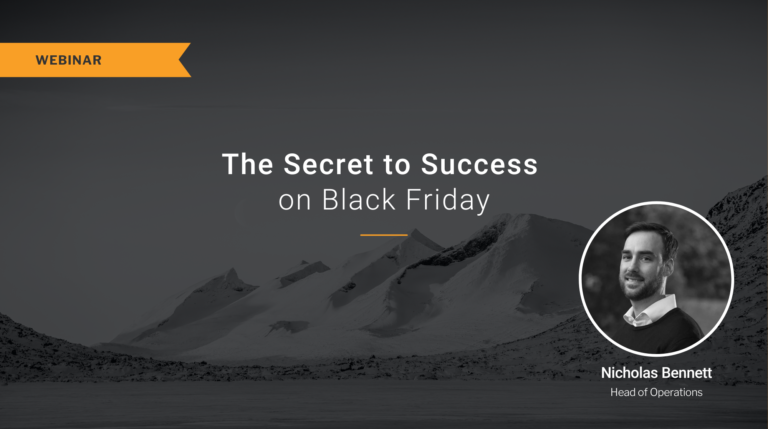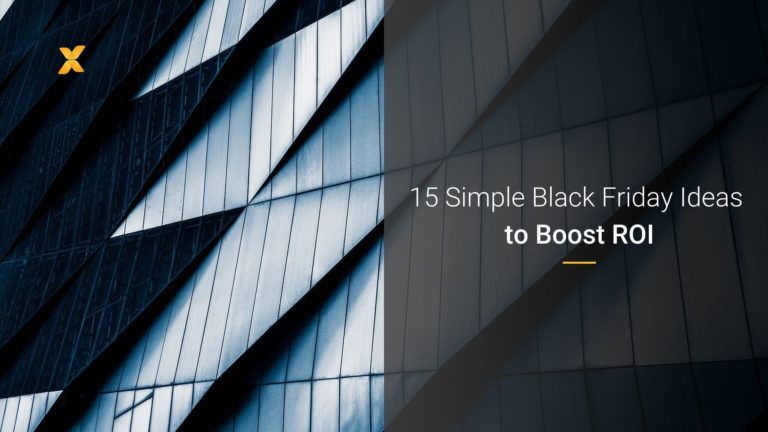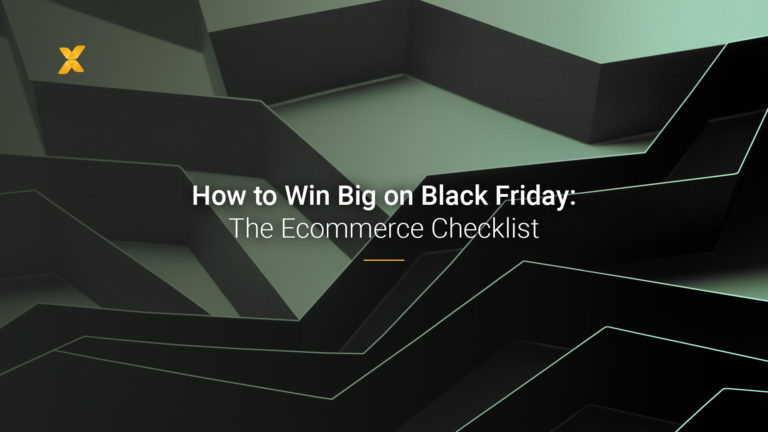Black Friday represents one of the biggest opportunities of the year for retailers, but success doesn’t happen by chance. With consumers expected to spend billions during this shopping event, a robust strategy is crucial for capitalizing on this peak sales period. Whether you’re an experienced retailer or preparing for your first Black Friday, this guide will help you navigate the complexities and maximize your revenue potential.
From leveraging data analytics to crafting compelling marketing campaigns and staying ahead of emerging trends, we’ll explore proven tactics to help you turn the biggest shopping day of the year into your most successful one.
TABLE OF CONTENTS
- Tips and best practices: how to maximize your Black Friday sales
- 3 Black Friday trends to keep your eye on
- Black Friday for B2B companies: is your company a good fit?
- How Vaimo can help you
Tips and best practices: how to maximize your Black Friday sales
1. Use data to your advantage
“Failing to prepare is preparing to fail.”
The old adage certainly rings true when you consider this mammoth shopping weekend. With data (and lots of it) available through analytics tools, there’s no reason why you should be walking into Black Friday blindfolded. Study previous years’ data and look for general trends. With the appropriate analytics tools, you can make intelligent, evidence-based decisions rather than just guessing. Ask yourself these questions:
- When is the best time to launch the marketing campaign?
- What promotional messages worked the best?
- What products were best-sellers?
- Were there particular stages where customers were abandoning purchases?
- What proportion of sales came from brand-new customers?
2. Perform dry runs of your key user journeys
It can be easy to fall into the trap of always seeing your web store from an internal perspective. But what about your external audiences? How do they experience the site?
It’s crucial that customers trust the information on your site and have a consistent and enjoyable experience across all channels. Spend some time navigating around your company’s website and check to make sure that everything is working properly or as expected. Examples of some things to look out for are:
- Broken links
- Conflicting product information
- Missing product information
- Incorrect formatting/display/alignment
- Slow-loading pages
- Incorrect redirects or misdirected pages
- Image pixelation or stretching
- Missing images or files
- Issues with formatting affecting page visuals
It’s also worth searching your site’s URL directly from search engines and social media call-to-actions to check the speed from different locations. This will ensure that you have all bases covered.
3. Test your technology
Picture the scene: you’ve nailed your marketing campaigns, have a slick-looking landing page, and have record numbers of visitors, but on Black Friday, the site is painfully slow. On top of this, visitors to your site are having difficulty navigating between pages on mobile, and when they finally come to make a purchase, the site crashes. So they quickly scuttle off to a competitor whose site is a joy to purchase from.
This is every retailer’s worst nightmare, but it can be mitigated by testing, testing, and more testing.
You see, testing your customer journeys is key, but these are only effective if the technology supporting them works as intended. Load-test your site well before this long weekend to determine its break point. Ensure that your site can handle the estimated number of visitors (plus a good chunk more, just in case), and check to make sure that the site is quick!
Studies show that the impact of website performance on conversion rates is significant. In short, the faster the page speed, the higher the conversion rate. Even seemingly small increases can make a huge difference in how much revenue your website generates.
4. Use marketing to create urgency
Ramping up your marketing activities for Black Friday should start in the weeks leading up to it, not a few nights before. Shoppers start planning early for Black Friday, even 44 to 45 days in advance. In other words, it’s important you get on their list during that time.
Use email marketing, social media, content, giveaways, and advertising to get on your customers’ radars early. Then, when the time comes, consumers will have you in the back of their minds and will be more likely to visit your site for that sale item.
The most successful Black Friday marketing creates a sense of urgency for your customers. Yes, you don’t want to spam your customers and overwhelm them with information, but it’s important that you showcase what you have to offer. Beyond price, use incentives early on, such as loyalty schemes, exclusive coupon codes, early access, and free delivery, to drive traffic and conversions.
Remember, though, that the average shopper will be hit with a deluge of marketing materials in the run-up to Black Friday as businesses vie for their attention. So, more than ever, this is the time to create marketing collateral that stands out and cuts through the noise of the generic sales emails filling up inboxes the world over.
On that note…
5. Refresh your content
Your content is one key way to drive a visitor into a repeat and loyal purchaser. For Black Friday, ensure your content is reconfigured to account for this sales period. You cannot just leave it as it is and hope customers find their way through your Black Friday product pages.
Get your product pages ready a week or two before sales so that search engines have a chance to index them and include them in feeds. You may also want to create a Black Friday category page, as customers often want to view all offers in one place.
A tactic often used by retailers is creating a landing page for Black Friday sales several weeks ahead of time and then implementing “hints” in phases, such as a call-to-action asking visitors to register for email alerts and previews of the products that will be marked down.
Black Friday tips and best practices: Key takeaways
- Learn from the data you collected during your previous Black Friday sales
- Navigate your website and ensure that the customer journeys are looking as they should
- Ensure your website performance is up to par to avoid hurting your conversion rate
- Use marketing to create a Black Friday buzz well in advance
- Refresh your content to drive repeated purchases and customer loyalty
3 Black Friday trends to keep your eye on
The way people shop evolves continuously, so make sure your business keeps up with the latest trends. Here are a few trends you shouldn’t miss out on this Black Friday.
1. Buy Now Pay Later
Buy Now Pay Later solutions have become increasingly central to consumer purchasing decisions, especially during high-spending events like Black Friday. This payment option provides shoppers the flexibility to spread costs over time without traditional credit card interest. It can even entice window shoppers to make a purchase right there and then.
Integrating Buy Now Pay Later into your ecommerce activities entails much more than just the technical requirements. Consider incorporating messaging around Buy Now Pay Later options in your marketing communication and campaigns, for example. You should also make the payment options visible early in the customer journey, as they could be a driving factor in the purchase.
2. Mobile-first shopping
When was the last time you made a purchase on your phone? Chances are it wasn’t that long ago.
In 2023, 51.1% of purchases were made on smartphones during Black Friday. To say that the mobile-first shopping experience is important is an understatement: it’s a must for ecommerce success. Consumers will browse Black Friday deals during their commute and lunch break, meaning your website or platform needs to be ready for their purchases. Fast-loading pages, easy navigation, streamlined checkout processes, and mobile-optimized product images have become baseline expectations.
In fact, the shift to mobile-first shopping has forced retailers to rethink their strategies altogether. Mobile push notifications, SMS marketing, and app-exclusive deals have become powerful tools for driving engagement and sales during Black Friday.
3. Guest checkout
The customer has browsed your products, chosen an item they love, and added it to their cart. Now comes a critical stage in the purchasing process: checking out. With shoppers racing to secure limited-time deals and moving quickly between multiple retailers, any friction in the checkout process can lead to abandoned carts. One of the main reasons consumers might leave your website before completing their order? Forced account creation. This is particularly true on mobile devices, where typing account details is more cumbersome.
However, retailers can strike a balance by offering a streamlined guest checkout option while incentivizing account creation post-purchase. This approach allows customers to complete their time-sensitive Black Friday purchases quickly while giving retailers an opportunity to convert them into registered users later.
Black Friday trends: Key takeaways
- Buy Now Pay Later has become a popular payment option and could be a driving factor during Black Friday.
- An attractive mobile-first shopping experience is essential to convert consumers using their smartphones.
- Don’t force consumers to create an account during checkout unless you give them sufficient incentive to do so.
Black Friday for B2B companies: is your company a good fit?
Black Friday is traditionally considered an event for B2C companies, but can B2B companies also participate in the epic sales event?
Before deciding whether or not to participate in Black Friday, it’s important that companies find out whether they are a good fit for a B2B Black Friday campaign. For starters, they need to judge their company’s position in the market during the sales holiday and assess recent B2B customer behavior, where many long for a shopping experience that more closely resembles B2C.
B2B companies that benefit from this behavioral change are those conducting business with B2C consumer goods and retail products. Some B2B examples include selling to painters, electricians, office supply buyers, retailers, restaurants, and hotels. If a B2B merchant’s customers have a Black Friday marketing campaign running, then they can also run campaigns.
Still, some B2B areas are better than others for Black Friday sales, and B2B companies need to think about this before investing their resources into a marketing campaign. Let’s go through a few examples of the companies that fit and those that don’t.
Probably not a great fit for Black Friday B2B
Products that solve a specific need at a particular time are a bad fit for Black Friday. Spare machine parts fit into this category. Nobody is looking for replacement parts for fully operating machines on Black Friday.
Then, more complex B2B solutions require a string of individuals across a company to give a thumbs up or thumbs down. On average, it takes 6 to 7 stakeholders to approve a complex B2B solution. With such a long purchasing journey, it is guaranteed that 10 B2B leaders won’t be sitting in front of the same monitor on Black Friday, refreshing B2B product pages.
Lastly, non-scalable B2B services don’t translate well to the biggest sales holiday of the year as their finite expertise will quickly run out.
A great fit for Black Friday B2B
The best bet for running a Black Friday marketing campaign is if B2B companies sell to companies in a handful of industries: fast-moving consumer goods (FMCG), fashion, utilities, office equipment, and consumable goods. In short, B2C companies offering easy-to-buy products are a great fit for Black Friday.
Ecommerce can assist companies further by using B2B behavior to sell repeat products quickly on Black Friday. Focusing deals on low-cost B2B items can lead to more sales this holiday season.
Using Black Friday B2B limited-time offers and promotions
Humans love a deal. It’s in our genetic code. Sales trigger our brains to release dopamine with hints of exclusivity on Black Friday sales copy: from discounts and sales to buy one get one free.
B2B companies can also tap into Black Friday psychology. Limited-time offers—both quantity and time-based—create a sense of urgency. For instance, they can offer clients the chance to receive a discounted price if their shopping basket exceeds a certain amount. Merchants can add more gasoline to the fire by adding a ticker to increase the feeling of FOMO.
3 tips for a Black Friday B2B marketing campaign
So, if you’ve decided to go ahead with your B2B Black Friday campaign, here are three ways to get the most out of it.
1. Unify campaigning across physical (sales reps, workshops) and digital channels
Consider the relevant channels for running a Black Friday marketing campaign. First, where are potential customers located? Will it take place both in-store and online, or only online? This will mean providing various assets that differ based on the channel and ensuring they still offer a unified message.
2. Start small, learn, and make it bigger next year
Make sure to do a proper retrospective and document it in advance: it saves time and decreases stress for the following year. Secondly, companies can choose the scope of their campaign, and it is especially relevant if they are trying Black Friday out for the first time.
Above all else, all businesses involved in Black Friday can reduce stress by starting high-level preparation in July or August. Companies that succeed year after year on Black Friday and Cyber Monday also take the time to perform a post-mortem. Use the weeks following Black Friday—while the event is still fresh—to assess overall performance, shortcomings, and victories to continue improving in the future.
3. Put together a solid plan
In addition to learning from past Black Friday experiences, companies can access best practices from other industries. At Vaimo, we help global brands succeed on Black Friday and during peak season sales. One of our most popular resources is our Black Friday Playbook.
Black Friday for B2B: Key takeaways
- If a company’s clients sell on Black Friday, B2B businesses can also profit.
- Companies should start planning for Black Friday as early as possible.
- A Black Friday marketing campaign should unify messaging across relevant channels and start small.
- A Black Friday post-mortem is essential for continued learning and success.
- B2B companies can use limited-time offers and hourly promos to create urgency.
How Vaimo can help you
Ready to tackle all the challenges and opportunities Black Friday brings? The success of your Black Friday campaign hinges on meticulous planning, robust technology, and strategic execution across all channels. While these elements may seem overwhelming, you don’t have to navigate this journey alone.
Vaimo can help you with a range of services, from insights & activation to fine-tuning your ecommerce strategy. With years of experience and dedicated experts, we help brands transform their Black Friday performance.
Talk to us today about putting a rock-solid strategy in place.







